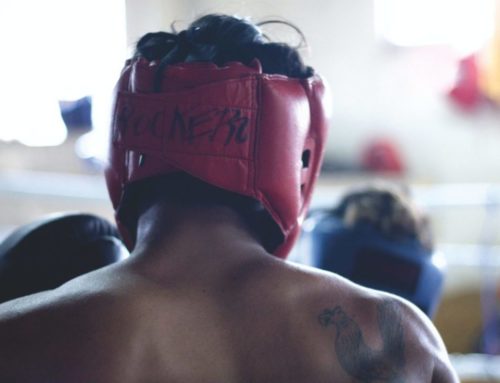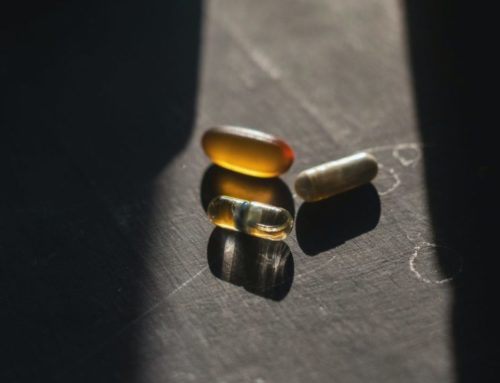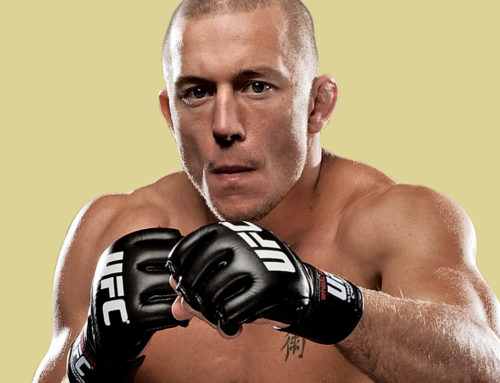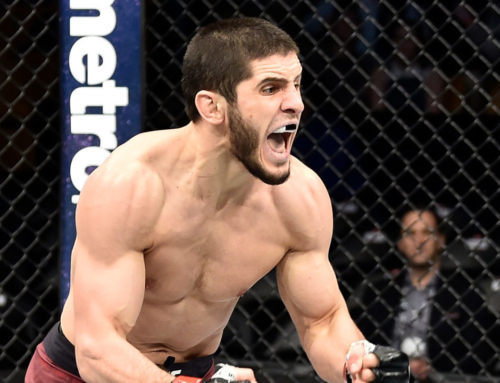From the outside, Golden Glory headquarters looks neither golden nor glorious.
Housed on the edge of an industrial estate in the historic Dutch city of Breda, the Golden Glory facility has little to advertise its presence save a relatively small sign over the door and the word KICK in large letters. You could easily drive past it without noticing it, unless you too were keeping an eye out because you were on a quest to see inside this legendary kickboxing dojo.
There is more than a touch of the Tardis about the place. From the outside it looks like it might be no bigger than the average side street bar or fast food restaurant. That’s because to the right there is a massive unmarked door, like something from a fire station, which leads into the main part of Golden Glory but has nothing on the exterior to indicate this.
Arriving outside the gym in the middle of a damp grey Wednesday there is little activity save a steadily growing small group of young men in the car park across the street. They are waiting for the gym to open and in the meantime they are shaking hands, patting backs and generally greeting each other like long-lost friends. The mix is white, black, Arabic and beyond, but here ethnicity comes second to team allegiance.
When head coach Cor Hemmers arrives it becomes clear that the reason some of these guys are greeting each other like long-lost friends is because some of them actually are. There are multiple Golden Glory facilities across the Netherlands and fighters often train apart from each other, meeting periodically at the team’s HQ here in Breda to train together.
Wednesday is the favoured day for this. Nicknamed ‘Gehaktdag’, it is two hours when the niceties of sparring go out the window.
“Gehakt is the Dutch word for minced meat, like ground beef. ‘Gehaktdag’ is mincemeat day – everybody goes 100 per cent in sparring. Big gloves, shinpads and spar like it is the K-1 finals,” Golden Glory ground coach Martijn de Jong laughs.
Striking coach Cor Hemmers is initially taken aback when Fighters Only appears to witness meat-day. “I wasn’t notified,” he says with a frown. We explain that we sent some emails to himself and de Jong and he booms with laughter. “That would explain things – I’ve got 1,700 unread emails!” Hemmers invites us to make ourselves comfortable as he sets about orchestrating proceedings.
There are perhaps twenty fighters in attendances, ranging from small, fierce-looking featherweights to men built like giants from tales of yore. One of them is so big he makes 180z gloves look small and his handshake is enough to cause instant arthritis. Later in the day he does a round sparring with one of the featherweights. Despite the comical mismatch in sizes, the featherweight gives it his all. He has proven deadly for sparring partners his own size all day, but in this instance he should really be mounted on a horse and wielding a lance.
Gehaktdag commences with several rounds of skipping and shadowboxing, the fighters taking it easy to begin with and increasing their efforts round after round as Euro dance music blares from the speakers under the full-size competition ring, which takes up one third of the rectangular room. The ring is located to the right-hand side as you walk from the changing rooms into the training area, while to the left, a giant mirror takes up one wall opposite the row of heavy bags on the far side of the room. A wall of cage-facing lies on the wall opposite the ring.
No-names line up alongside the glitterati. Jamal Benz, a 21-year old 130 kilo heavyweight, has had one pro-level fight. He skips between K-1 standouts Gokhan Saki and Errol Zimmerman. A small Belgian national is attending today to stake a claim to a spot on the team; he is dwarfed by the enormous Sergei Kharitonov, who wanders the room like a white bear with a typically Russian impassiveness on his face.
Hemmers stands in one corner of the room and surveys the activity through narrowed eyes. Giving every appearance of being the distant cousin of Drill Sergeant Hallman from Full Metal Jacket, he barks out one-line orders that the fighters wordlessly rush to obey. When enough shadowboxing has been done, Hemmers orders the commencement of drills.
These start with one strike. The first shot is a right hand, the partners going one for one, alternating turns. Hemmers barks again, they add a left hook. A few more repetitions and another growl from Hemmers sticks a low kick on the end of the hook. Layer after layer of surgical violence is added, turning the initial right hand into the jump-off point for a five-part assault.
Different combinations are worked through, each starting with one shot then having further components added to it as the minutes tick by. The Golden Glory boys are all business by now; there is none of the light-hearted messing and joking that there was during the warm-up. Grunts and hisses fill the air as they power into certain shots, although all refrain from hammering the leg kicks in. That will happen in due course.
The clock sounds the end of another round and Hemmers tells the fighters to take a quick break. Having worked up a sweat, they are grateful to get a drink of water and they gulp their liquids down quickly. After the break, sparring will commence and so the moments of quiet are spent in brief contemplation of the forthcoming rounds.
All too soon, Hemmers orders them back on the mat. They go back with the partner they were drilling with, but there is now a notable soupcon of tension in the air. Eye contact is less than what it was as the participants mentally switch from training partners to opponents. This particular day, Gehaktdag, is the hardest day of the week at Golden Glory, with little quarter asked or given. Little surprise that smiles are fading fast.
Behind me, in the ring, are Gokhan Saki, Errol Zimmerman, Sergei Kharitonov and a Belgian heavyweight who has recently joined the team and racked up some impressive wins. Out on the mat, Roben Van Roosmalen and Nicky Hemmers, Cor’s son, are among the animals prowling around.
Saki is not far removed from January 28th,where he will face the Golden Boy of heavyweight kickboxing Badr Hari. A serious character anyway, Saki’s dour demeanour and smouldering intensity are ratcheted up even higher than normal. That translates into a serious day for Zimmerman. When the two of them spar, it brings every bystander in the room over to ringside.
They go at it with a homicidal intensity, the way only two people who have been friends half their lives can. While Saki is undoubtedly the better kickboxer, Zimmerman packs power and both outweighs and outsizes the crusierweight Saki. Zimmerman is not of Hari-like proportions or skill but being bigger and stronger means he presents some similar challenges for Saki.
As ever, Saki’s main weapons are his speed and his technicality. Any opening is exploited lightning-quick and he throws four and five-hit combinations fully intending the first few shots to be mere distractions ahead of the full payload of the last two parts. A tricky customer, Saki is fond of side-stepping and wheeling off after he delivers, and so Zimmerman – who often shells up with a double-arm cover – finds himself swinging at air a lot.
A K-1 veteran with a solid record of his own, Zimmerman is nevertheless a slight disappointment to those who know what he might have achieved had training been his true love instead of women, nightclubs and the bar stool. A portly gentleman when not strictly locked down for a training camp, his cardiovascular disadvantage against Saki becomes clear after they have gone a few hard rounds. Zimmerman is sucking in gallons of air as if he means to store some of it for another day. Saki glistens with sweat, but appears to be enjoying himself.
Meanwhile Kharitonov and his Belgian dance partner are also in the ring. Kharitonov, who at this point has been ‘out of season’ for a few weeks and not at peak fitness, is favouring the one-shot approach, snipering with a straight left and a jab to the body from distance, an overhand right when Philip presses forward. Their rounds have not had the pace of Saki-Zimmerman but the power is there and they are giving each other things to think about.
Standing on the edge of the ring, and thus looking down, the matted area resembles a piranha tank at feeding time. It is a swirling mass of lighter-weight fighters moving at speed, circling, darting, clashing and separating again and again in a maelstrom of violence. And what they lack in the raw power of their heavyweight brethren they make up for in speed, timing and a murderous technicality.
Right on cue, one of the pair to my left is dropped by a liver shot that comes as the fourth shot of a combination. He goes down hard; he has hit the floor before his brain has even fully processed what exactly is happening down to there to its right. Frozen in that instant, his face is a picture of mortal agony. Fighters of all levels and disciplines will tell you that the body shot is more fearsome than the headshot, as it is harder to recover from and is a high-definition pain of sharp, white-hot clarity in contrast to the muzzy fogginess that often follows a good head-shot.
He takes no longer than he needs to recover himself, perhaps nine or ten seconds. They pass quickly for me, for him they are near a lifetime. But he regains his feet and grits his teeth, throwing himself back into the fray. They touch gloves and recommence. Another combination and another body shot – this time the cover is there. The lesson has been learned. He is quick to answer back, ploughing a leg kick into his antagonist’s exposed thigh.
Behind him, the battles are no less intense. The levels seem to be fairly even between the fighters and nobody is taking a one-sided beating. They are plenty of two-sided beatings though. Damage is exchanged freely and forcefully. Attending Gehaktdag is a little like climbing without a rope – there are going to be real consequences if you are not concentrating on what you are doing. It wont be as bad as falling from a cliff but one slip-up might cost you a rib or a quick involuntary nap with a hangover that takes a day or two to shake off.
Watching it all intently is Hemmers. A veteran coach and kickboxer, he has produced so many champions that he may well have calluses on his hands from lifting trophies. He knows Tokyo better than many Japanese thanks to his repeated visits there for the K-1 tournaments over the years. It would be easy for him to be jaded, to watch only his star names and ignore the rest.
Instead he has an eye for all, and he is certainly is not blasé about other people watching them. Everyone who wants to be in the room as a spectator for today’s sparring is quizzed as to their reasons and intentions. My camcorder is eyed with borderline suspicion before permission for filming is granted on condition that Saki’s sparring is not taped or broadcast in full.
When sparring has concluded, I set my camcorder up in the corner of the room to tape interviews with Hemmers and Saki. They get themselves some food and water before coming over to talk. Hemmers is relaxed, friendly and expansive. No subject is taboo and he spends a good twenty minutes talking about different subjects, from the early years to the future.
Saki is almost the opposite. He is tired from the sparring but it has done nothing to dull his fierce intensity. If anything the fatigue adds to it. On January 28th, he will carry the Golden Glory flag to the north of Holland. In the coastal town of Leeuwarden he will step into the ring against Badr Hari from nearby Amsterdam.
Outsized and outweighed, Saki faces all manner of disadvantage. But he doesn’t care. Relating his run in the K-1 World Grand Prix last year, which saw him enter the ring against Alistair Overeem with a broken hand and a bad leg injury, he gives a penetrating insight into his mindset.
“If I can still walk I can still fight. One arm, one leg… if you do not try, what can you know about yourself? If you do not fight, how can you win?” And he is similarly dismissive – at least outwardly – of his disadvantages against Hari. “He is a complete fighter but sometimes too aggressive, too much emotion. If he loses control, that would be a mistake against me.”
We discuss Alistair Overeem’s recent departure from the team. Hemmers heaves a sigh, clearly sorry to have lost Overeem’s presence and yet so well-used to such things at this stage of his career that nothing surprises him. He has lost no sleep. Hemmers believes that Overeem was not interested in working out any new deal with Golden Glory once he signed with the UFC.
He acknowledges that the percentages in Overeem’s contract seemed high, but there were apparently tax reasons for these numbers. Hemmers says regardless, a new deal would have been possible but Overeem showed no inclination to talk. Now that he has signed for big money with the UFC he is reluctant to give any of it up, Hemmers believes.
But he also says that Overeem’s departure was probably also strongly connected to his relationship with Golden Glory managing director Bas Boon. A well-known figure in the kickboxing world, Boon handles the contract side of things for Golden Glory, holds the purse strings and negotiates with promoters and sponsors. The real fallout was not so much with Overeem and Golden Glory as it was with Overeem and Boon.
Despite his departure, Hemmers holds no ill will, although he does acknowledge that there might be a sense of betrayal in the air. It is a theme repeated among the fighters present, such as Saki. None of them feel personal animosity to Overeem but they do feel that he ditched the team and that he sold them out once he got into really big money.
Siyar Bahadurazda is based in Amsterdam, two hours drive from Breda, and Overeem also lives there. They perhaps spent more time with each other than Overeem spent with other Golden Glory fighters and so Siyar does not like to comment on the situation at all. He still counts Overeem as a friend and is hopeful – probably in vain – that a reconciliation can be achieved.
The Breda gym is adorned with fight posters from days gone by. They date back to 1988,when Ivan Hippolyte and Ernesto Hoost were in their primes at the top of the Dutch kickboxing scene. Train at Golden Glory Breda and you are training in the shadow of giants. Their printed stares watch over the room day and night, offering silent inspiration and criticism in equal measure.
Following the posters in chronological order is like charting the emergence of new talent. Here, Saki is a name at the bottom of the bill. There he is halfway up. By the door, he is top billing on the Its Showtime poster, opposite Badr Hari. There are posters featuring all the famous names of Golden Glory, from Semmy Schilt to Stefan Leko and beyond.
Overeem was among their number as well but now he is nowhere to be found. I heard a rumour that when he split with Golden Glory, his peers at the gym – former friends and sparring partners – defaced the posters he was on, or ripped them down. I ask about this and I get a quiet nod and a shrug. “Its true,” I’m told. “There are no hard feelings but… some people feel he wasn’t right to leave like he did.”






